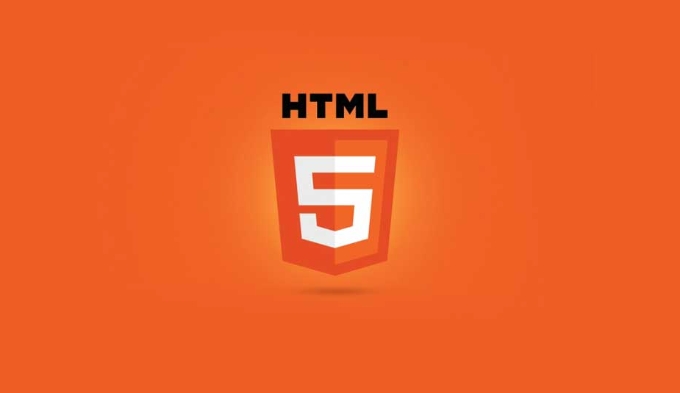The core of HTML5 Canvas implementation animation is to manually clear and repaint the canvas content. The basic principle is to draw the picture in a fast and continuous manner to create dynamic effects in the human eye. Implementation steps include: 1. Set the initial state (such as position, speed); 2. Clear the canvas; 3. Update the object state; 4. Re-draw the element; 5. Use requestAnimationFrame() to control the frame rate to continuously animation. The sample code shows a small ball moving to the right and can control direction and speed by modifying the dx value, and even achieve boundary rebound. For multiple animation objects, you can use an array to store objects and traverse updates and draws in each frame, suitable for a variety of dynamic scenes in the game.

HTML5 Canvas is a powerful tool that can be used to draw graphics on web pages and animation effects. The key is to understand its drawing mechanism and how to constantly repaint the canvas content through loops.

The basic principles of animation
Canvas itself does not have "animation" function, it is just a bitmap canvas. To implement animation, you need to manually clear the current screen and then repaint the new screen. This process usually uses requestAnimationFrame() to control the frame rate for smoother visual effects.

For example: If you want a ball to move on the screen, you need to update the ball's position every few minutes, and then clear the canvas and re-draw it. This process is repeated fast enough that the human eye will feel that it is "moving".
The core steps to implement animation:

- Set initial state (such as position, speed, etc.)
- Clear the canvas
- Update status (such as location changes)
- Re-draw elements
- Call
requestAnimationFrame()to continue with the next frame
Example of basic animation structure
Here is a simple animation skeleton code:
const canvas = document.getElementById('myCanvas');
const ctx = canvas.getContext('2d');
let x = 0;
function animate() {
ctx.clearRect(0, 0, canvas.width, canvas.height); // Clear the entire canvas ctx.beginPath();
ctx.arc(x, 100, 20, 0, Math.PI * 2); // Draw a circle ctx.fillStyle = 'blue';
ctx.fill();
x = 2; // move a little to the right every time requestAnimationFrame(animate); // Request the next frame}
animate(); // Start the animationThis code draws a small blue ball moving from left to right on the canvas. You can modify the color, shape, motion trajectory, etc. as needed.
Control the rhythm and direction of the animation
Although the above example is simple, it is often necessary to control the speed, direction and even acceleration of the animation in actual development.
- If you want to slow down the animation, you can reduce the value of each position change (such as changing
x = 2tox = 1) - If you want it to bounce back, you can reverse the velocity direction when it hits the boundary
Let's give a simple rebound example:
let x = 0;
let dx = 2;
function animate() {
ctx.clearRect(0, 0, canvas.width, canvas.height);
ctx.beginPath();
ctx.arc(x, 100, 20, 0, Math.PI * 2);
ctx.fillStyle = 'red';
ctx.fill();
if (x dx > canvas.width - 20 || x dx < 20) {
dx = -dx; // When it hits the left and right edges, it will be reversed}
x = dx;
requestAnimationFrame(animate);
}In this way, the ball will bounce back and forth in the canvas.
How to deal with multiple animation objects?
If you want multiple objects to move at the same time, such as multiple spheres, enemies, or particle effects, you can organize these objects into an array and then traverse them in each frame to update and draw them separately.
The basic ideas are as follows:
- Define an array of objects, each object contains information such as position, speed, etc.
- In the animation function, clear the canvas first
- Iterate through the array and update the status of each object
- Iterate through the array again and draw each object out
This method is very suitable for enemies, bullets, special effects, etc. in the game.
Basically that's it. Canvas animations look simple, but there are a lot of details, especially when it comes to performance optimization and complex interactions. However, as long as you master the infrastructure, you can achieve richer results step by step.
The above is the detailed content of Animating graphics using the HTML5 Canvas API.. For more information, please follow other related articles on the PHP Chinese website!

Hot AI Tools

Undress AI Tool
Undress images for free

Undresser.AI Undress
AI-powered app for creating realistic nude photos

AI Clothes Remover
Online AI tool for removing clothes from photos.

Clothoff.io
AI clothes remover

Video Face Swap
Swap faces in any video effortlessly with our completely free AI face swap tool!

Hot Article

Hot Tools

Notepad++7.3.1
Easy-to-use and free code editor

SublimeText3 Chinese version
Chinese version, very easy to use

Zend Studio 13.0.1
Powerful PHP integrated development environment

Dreamweaver CS6
Visual web development tools

SublimeText3 Mac version
God-level code editing software (SublimeText3)
 Adding drag and drop functionality using the HTML5 Drag and Drop API.
Jul 05, 2025 am 02:43 AM
Adding drag and drop functionality using the HTML5 Drag and Drop API.
Jul 05, 2025 am 02:43 AM
The way to add drag and drop functionality to a web page is to use HTML5's DragandDrop API, which is natively supported without additional libraries. The specific steps are as follows: 1. Set the element draggable="true" to enable drag; 2. Listen to dragstart, dragover, drop and dragend events; 3. Set data in dragstart, block default behavior in dragover, and handle logic in drop. In addition, element movement can be achieved through appendChild and file upload can be achieved through e.dataTransfer.files. Note: preventDefault must be called
 Getting user location with HTML5 geolocation API
Jul 04, 2025 am 02:03 AM
Getting user location with HTML5 geolocation API
Jul 04, 2025 am 02:03 AM
To call GeolocationAPI, you need to use the navigator.geolocation.getCurrentPosition() method, and pay attention to permissions, environment and configuration. First check whether the browser supports API, and then call getCurrentPosition to obtain location information; the user needs to authorize access to the location; the deployment environment should be HTTPS; the accuracy or timeout can be improved through configuration items; the mobile behavior may be limited by device settings; the error type can be identified through error.code and given corresponding prompts in the failed callback to improve user experience and functional stability.
 Using ARIA attributes with HTML5 semantic elements for accessibility
Jul 07, 2025 am 02:54 AM
Using ARIA attributes with HTML5 semantic elements for accessibility
Jul 07, 2025 am 02:54 AM
The reason why ARIA and HTML5 semantic tags are needed is that although HTML5 semantic elements have accessibility meanings, ARIA can supplement semantics and enhance auxiliary technology recognition capabilities. For example, when legacy browsers lack support, components without native tags (such as modal boxes), and state updates need to be dynamically updated, ARIA provides finer granular control. HTML5 elements such as nav, main, aside correspond to ARIArole by default, and do not need to be added manually unless the default behavior needs to be overridden. The situations where ARIA should be added include: 1. Supplement the missing status information, such as using aria-expanded to represent the button expansion/collapse status; 2. Add semantic roles to non-semantic tags, such as using div role to implement tabs and match them
 Securing HTML5 web applications against common vulnerabilities
Jul 05, 2025 am 02:48 AM
Securing HTML5 web applications against common vulnerabilities
Jul 05, 2025 am 02:48 AM
The security risks of HTML5 applications need to be paid attention to in front-end development, mainly including XSS attacks, interface security and third-party library risks. 1. Prevent XSS: Escape user input, use textContent, CSP header, input verification, avoid eval() and direct execution of JSON; 2. Protect interface: Use CSRFToken, SameSiteCookie policies, request frequency limits, and sensitive information to encrypt transmission; 3. Secure use of third-party libraries: periodic audit dependencies, use stable versions, reduce external resources, enable SRI verification, ensure that security lines have been built from the early stage of development.
 Integrating CSS and JavaScript effectively with HTML5 structure.
Jul 12, 2025 am 03:01 AM
Integrating CSS and JavaScript effectively with HTML5 structure.
Jul 12, 2025 am 03:01 AM
HTML5, CSS and JavaScript should be efficiently combined with semantic tags, reasonable loading order and decoupling design. 1. Use HTML5 semantic tags, such as improving structural clarity and maintainability, which is conducive to SEO and barrier-free access; 2. CSS should be placed in, use external files and split by module to avoid inline styles and delayed loading problems; 3. JavaScript is recommended to be introduced in front, and use defer or async to load asynchronously to avoid blocking rendering; 4. Reduce strong dependence between the three, drive behavior through data-* attributes and class name control status, and improve collaboration efficiency through unified naming specifications. These methods can effectively optimize page performance and collaborate with teams.
 Using HTML5 Semantic Elements for Page Structure
Jul 07, 2025 am 02:53 AM
Using HTML5 Semantic Elements for Page Structure
Jul 07, 2025 am 02:53 AM
Using HTML5 semantic tags can improve web structure clarity, accessibility and SEO effects. 1. Semantic tags such as,,,, and make it easier for the machine to understand the page content; 2. Each tag has a clear purpose: used in the top area, wrap navigation links, include core content, display independent articles, group relevant content, place sidebars, and display bottom information; 3. Avoid abuse when using it, ensure that only one per page, avoid excessive nesting, reasonable use and in blocks. Mastering these key points can make the web page structure more standardized and practical.
 HTML5 video not playing in Chrome
Jul 10, 2025 am 11:20 AM
HTML5 video not playing in Chrome
Jul 10, 2025 am 11:20 AM
Common reasons why HTML5 videos don't play in Chrome include format compatibility, autoplay policy, path or MIME type errors, and browser extension interference. 1. Videos should be given priority to using MP4 (H.264) format, or provide multiple tags to adapt to different browsers; 2. Automatic playback requires adding muted attributes or triggering .play() with JavaScript after user interaction; 3. Check whether the file path is correct and ensure that the server is configured with the correct MIME type. Local testing is recommended to use a development server; 4. Ad blocking plug-in or privacy mode may prevent loading, so you can try to disable the plug-in, replace the traceless window or update the browser version to solve the problem.
 Embedding video content using the HTML5 `` tag.
Jul 07, 2025 am 02:47 AM
Embedding video content using the HTML5 `` tag.
Jul 07, 2025 am 02:47 AM
Embed web videos using HTML5 tags, supports multi-format compatibility, custom controls and responsive design. 1. Basic usage: add tags and set src and controls attributes to realize playback functions; 2. Support multi-formats: introduce different formats such as MP4, WebM, Ogg, etc. through tags to improve browser compatibility; 3. Custom appearance and behavior: hide default controls and implement style adjustment and interactive logic through CSS and JavaScript; 4. Pay attention to details: Set muted and autoplay to achieve automatic playback, use preload to control loading strategies, combine width and max-width to achieve responsive layout, and use add subtitles to enhance accessibility.






